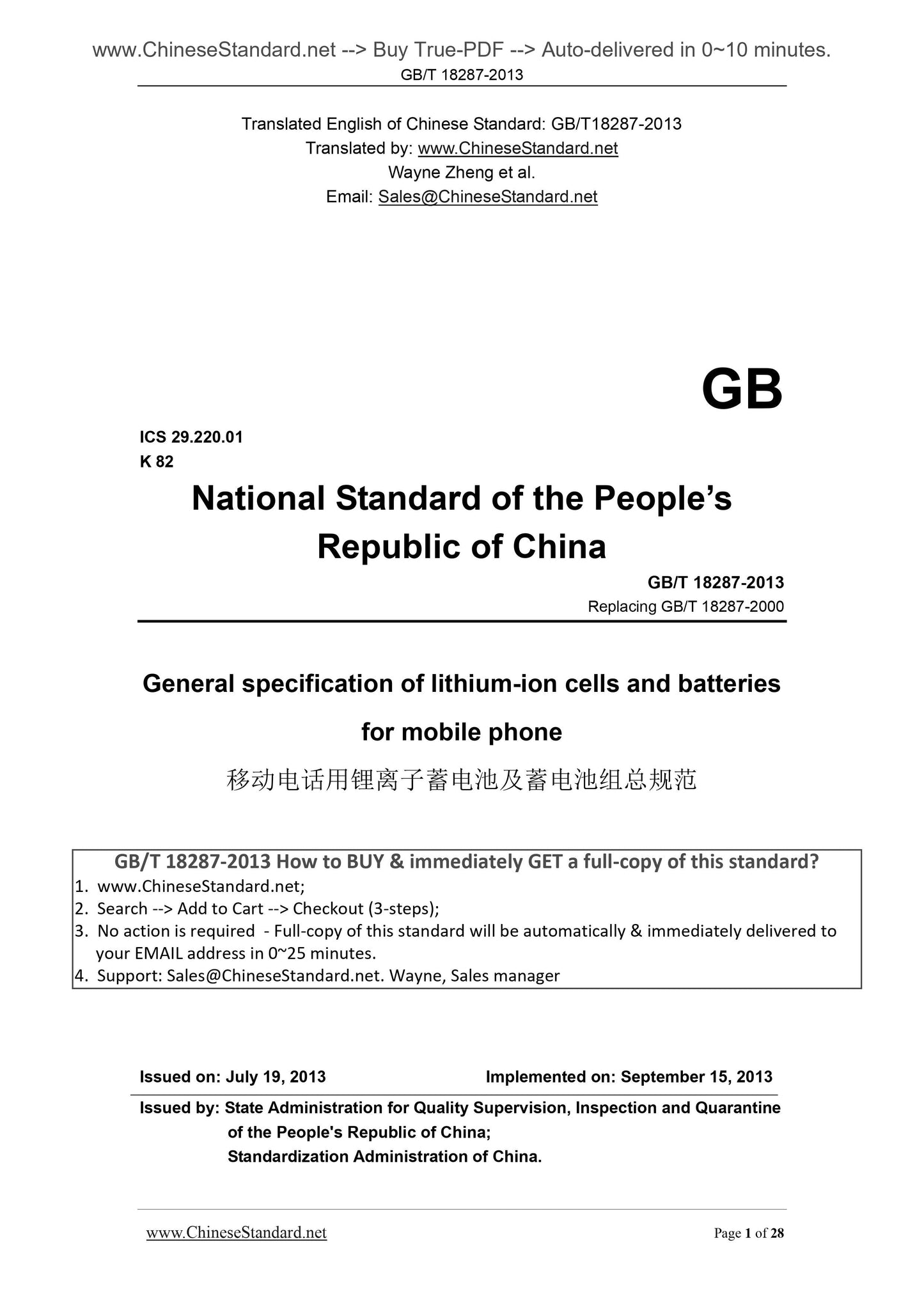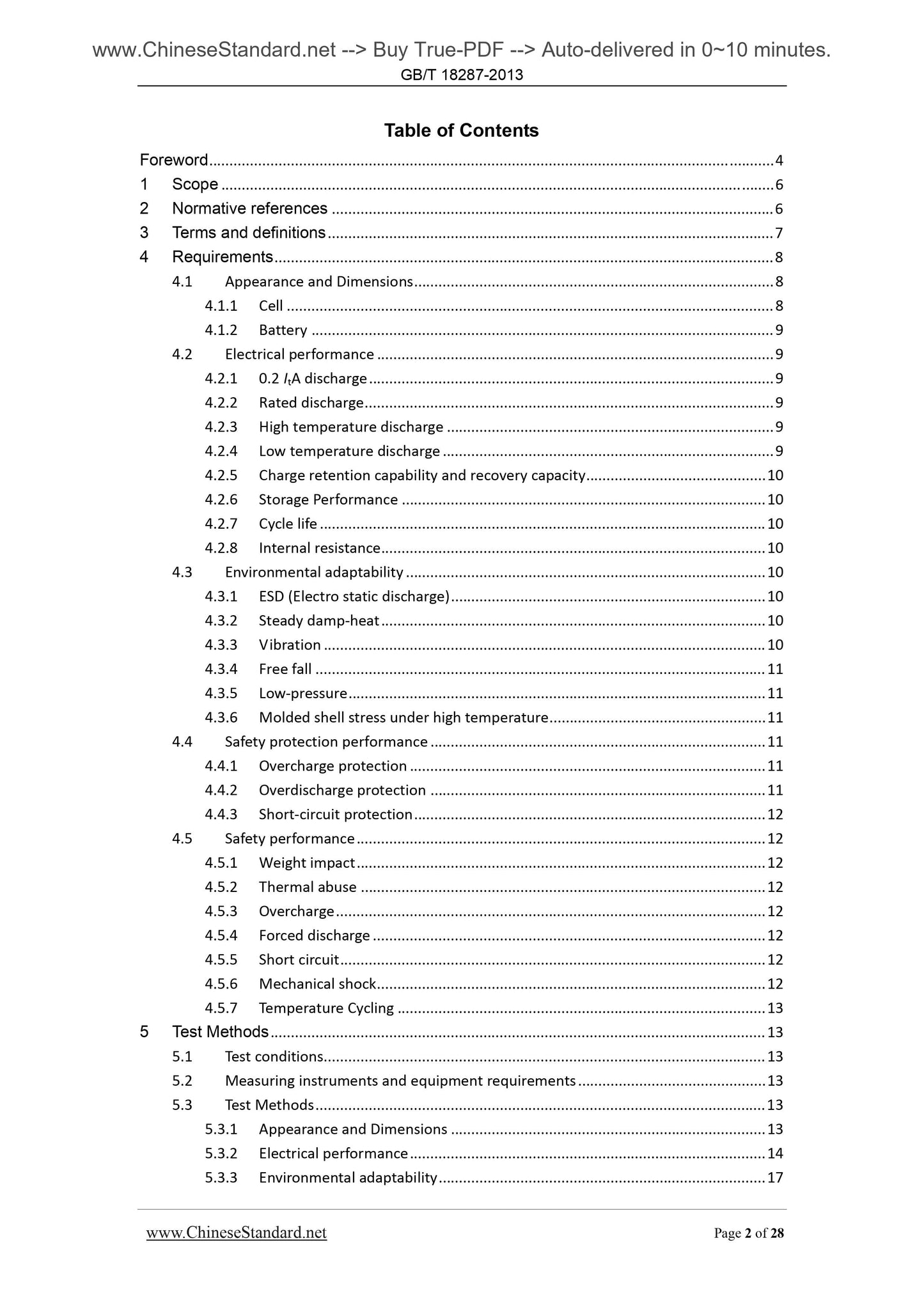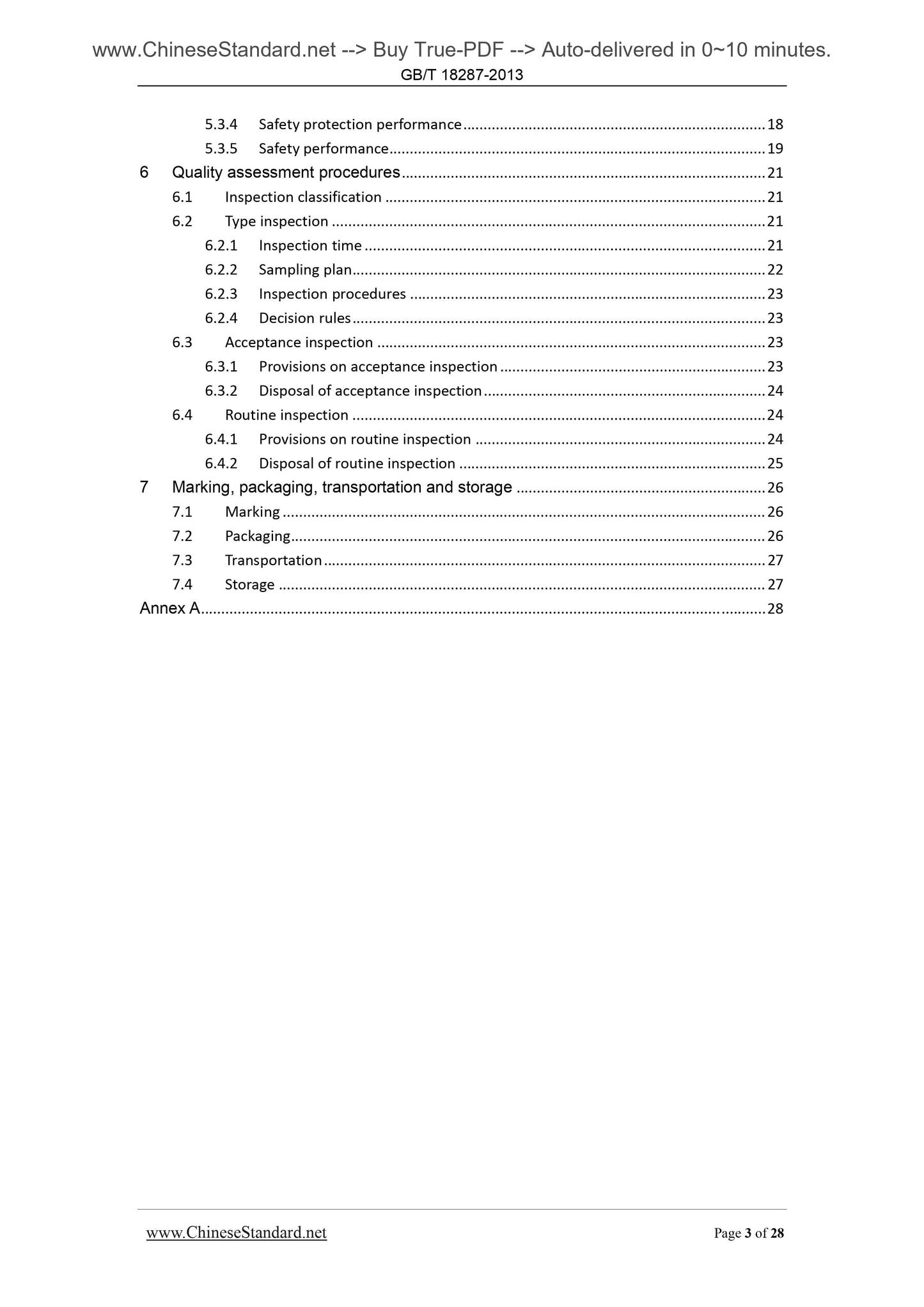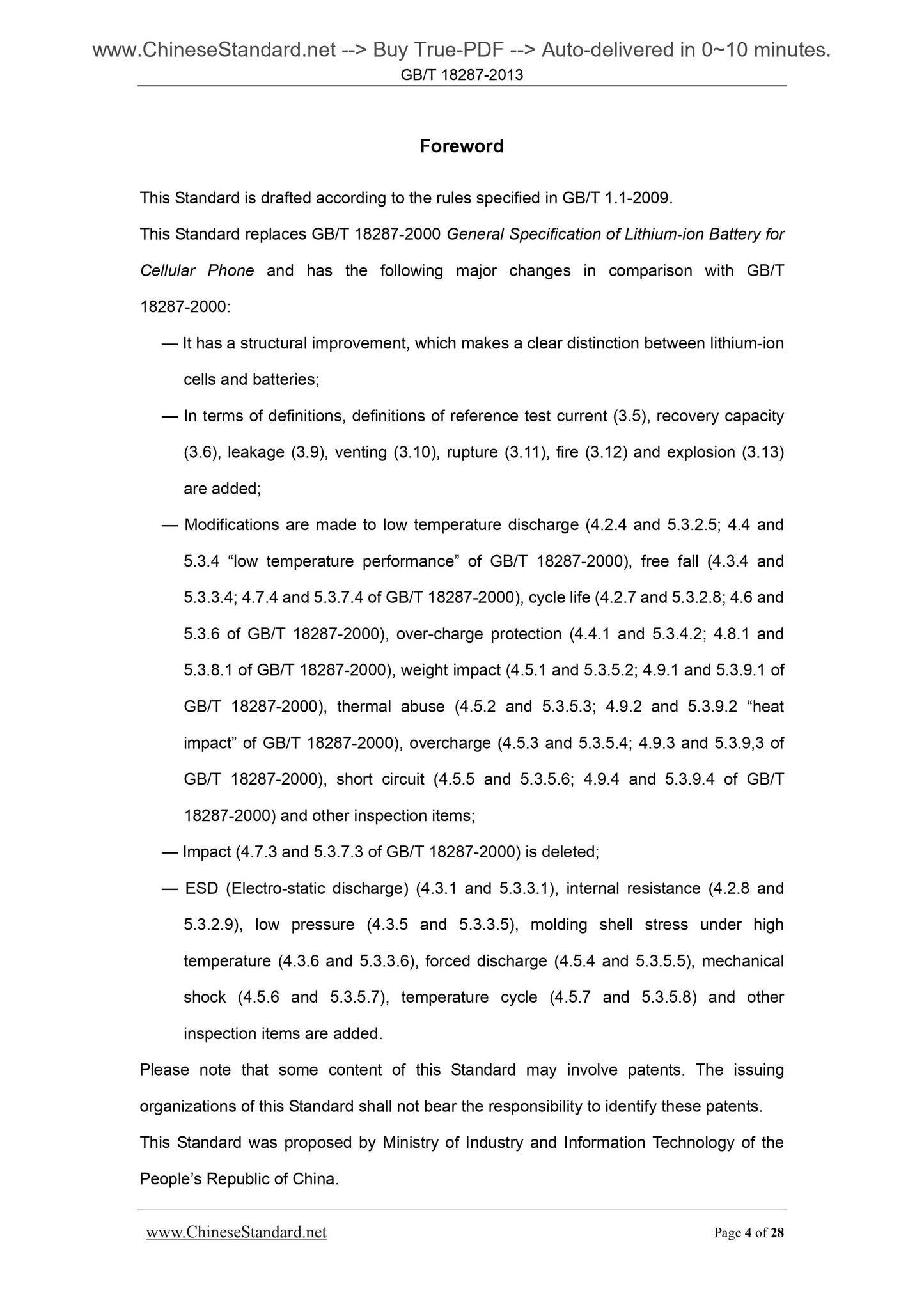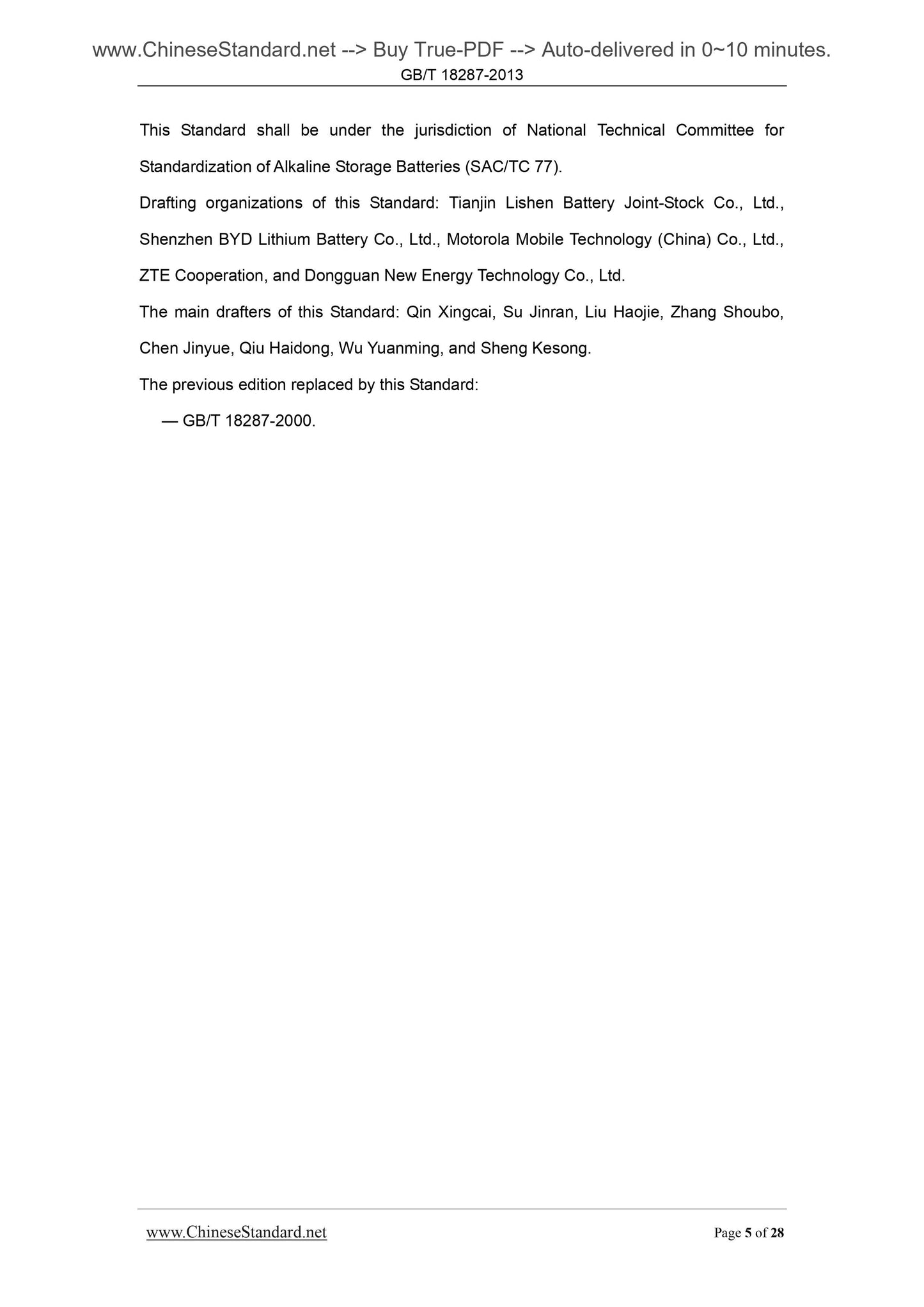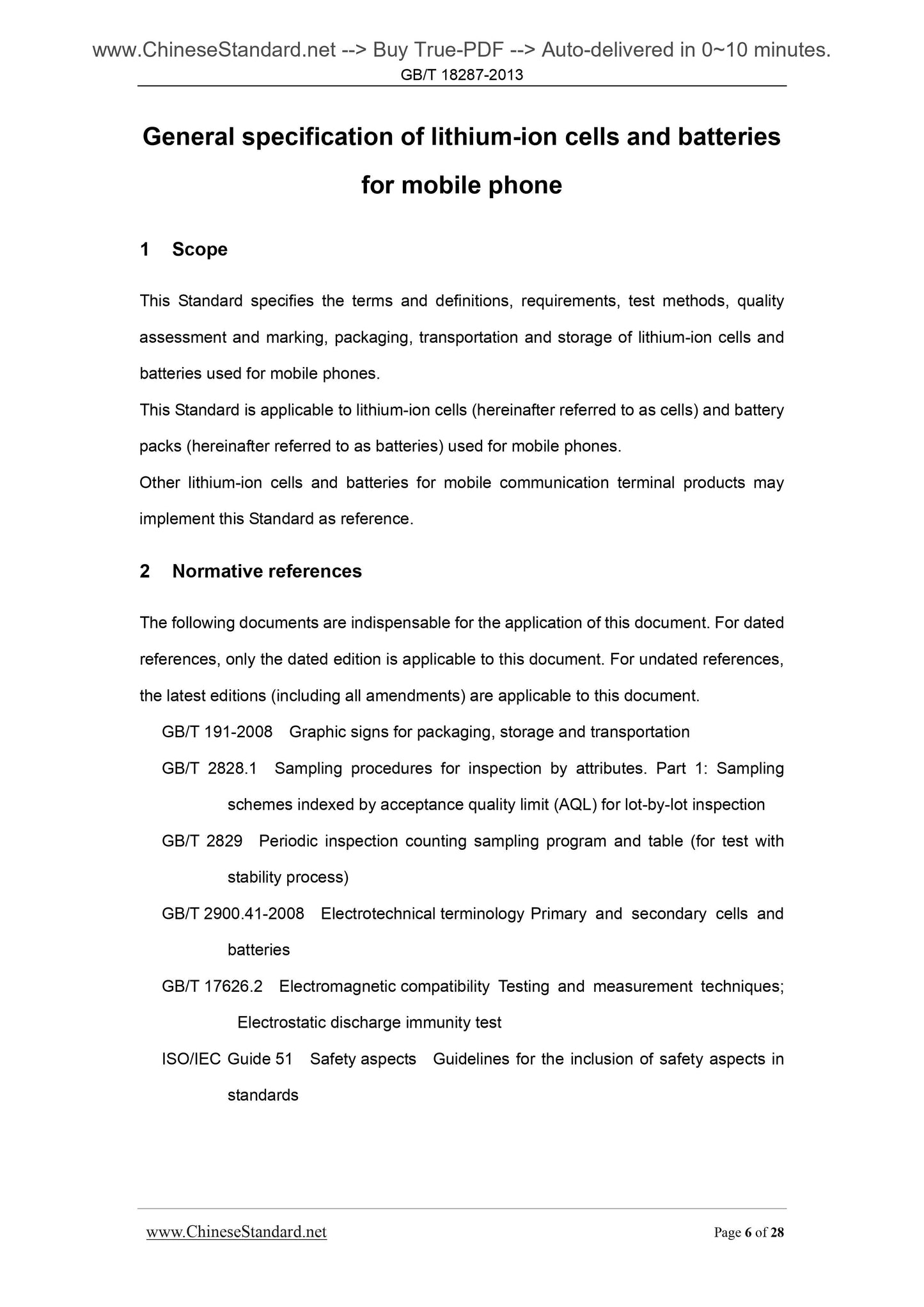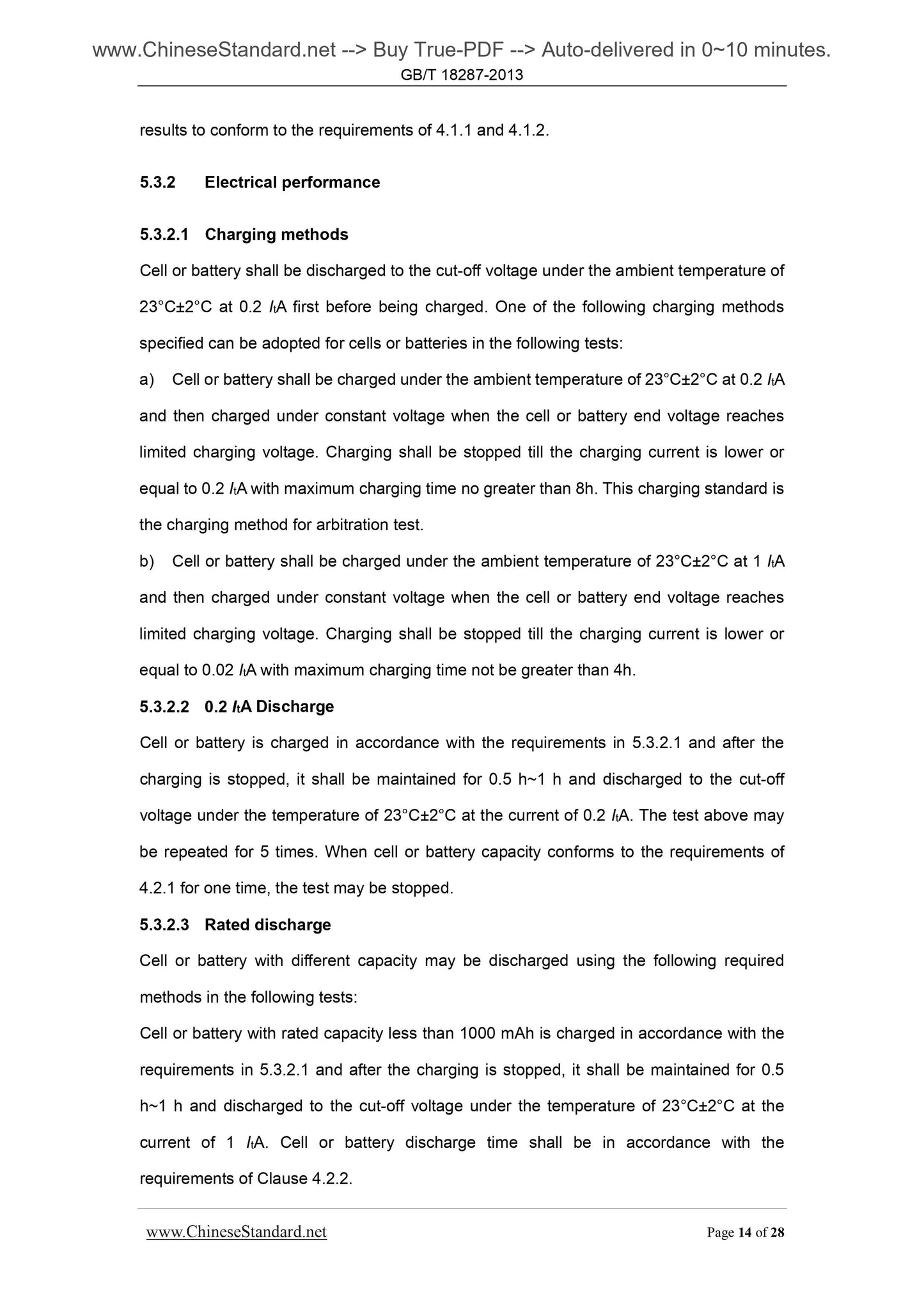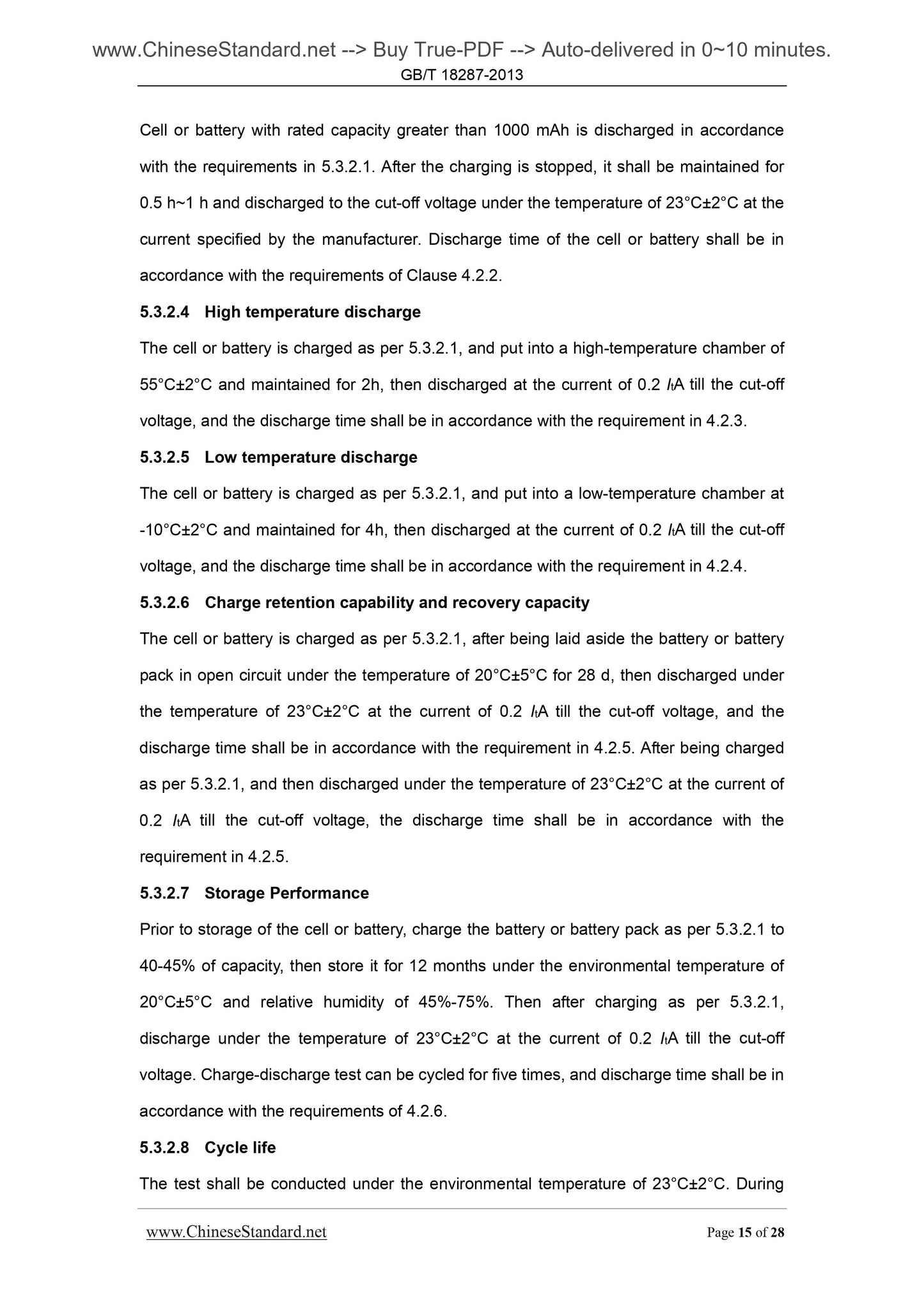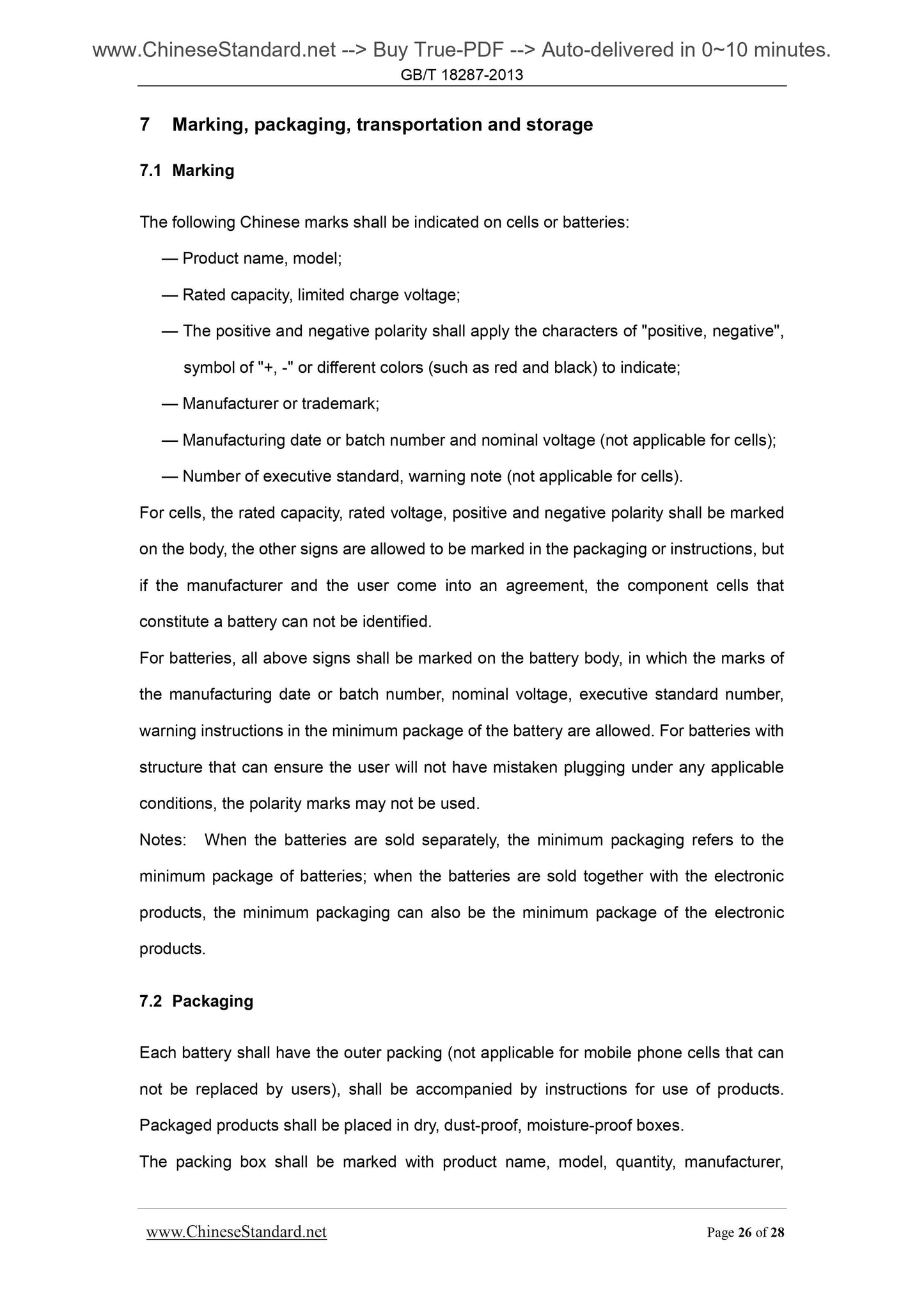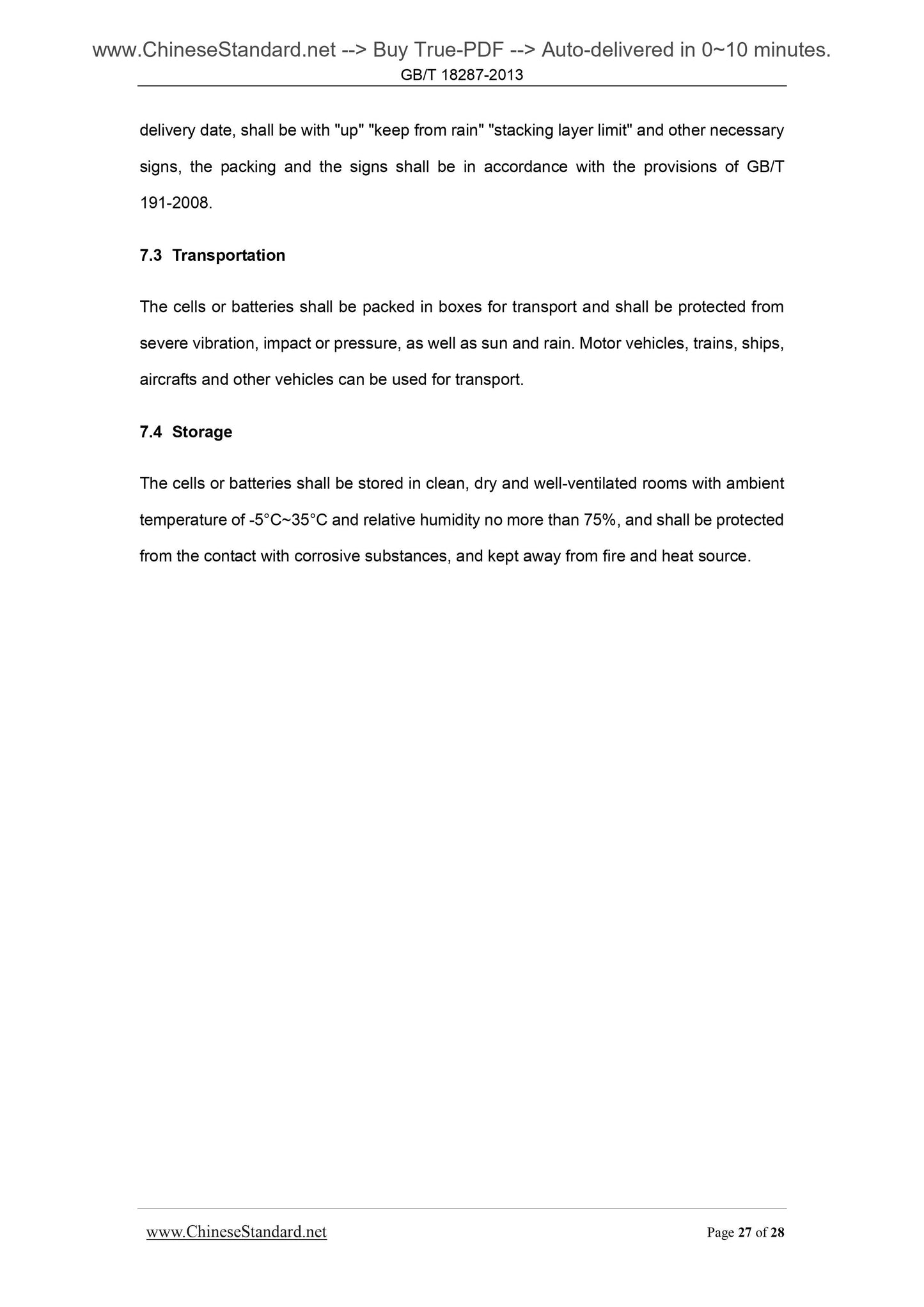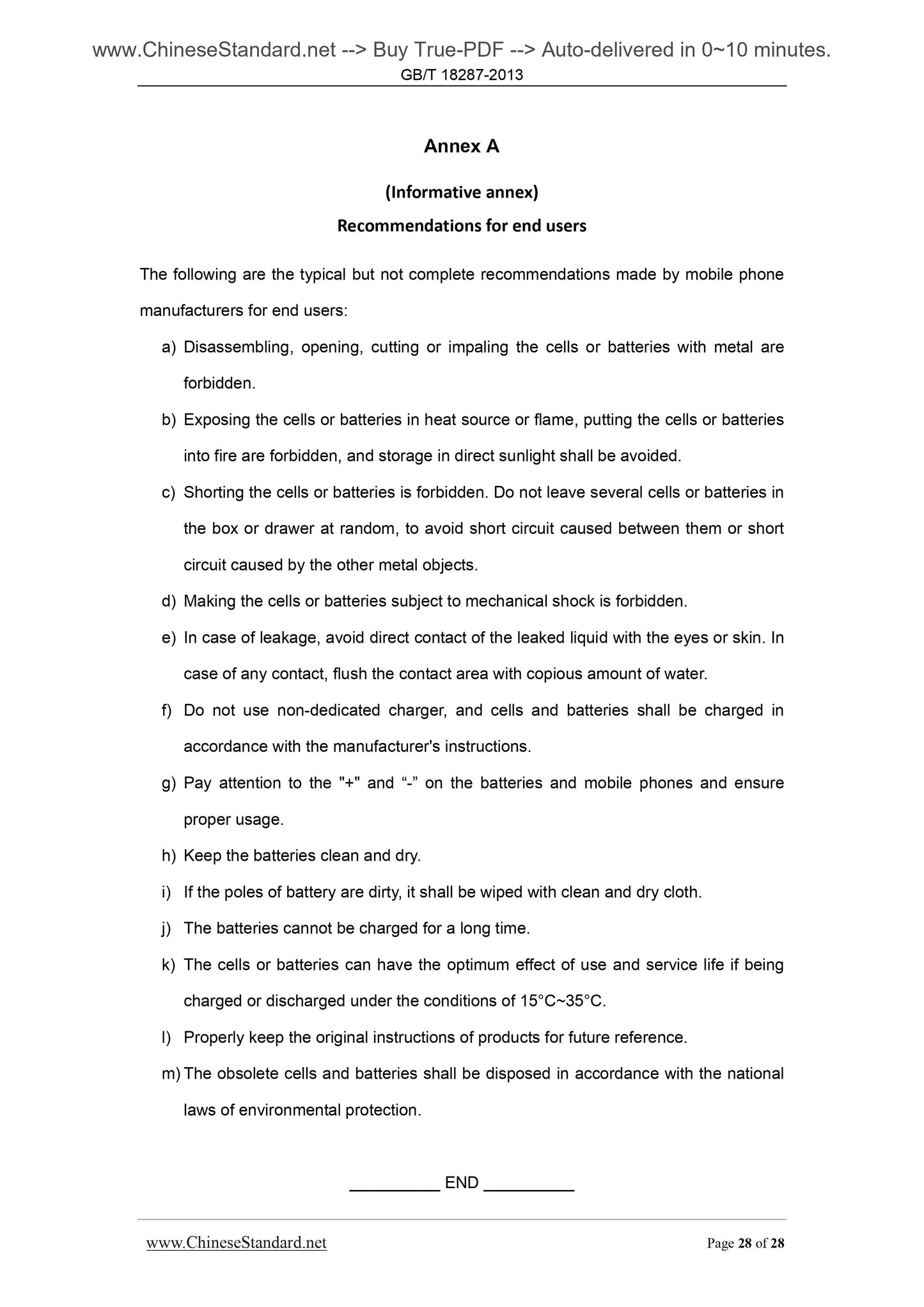1
/
of
12
www.ChineseStandard.us -- Field Test Asia Pte. Ltd.
GB/T 18287-2013 English PDF (GB/T18287-2013)
GB/T 18287-2013 English PDF (GB/T18287-2013)
Regular price
$150.00
Regular price
Sale price
$150.00
Unit price
/
per
Shipping calculated at checkout.
Couldn't load pickup availability
GB/T 18287-2013: General specification of lithium-ion cells and batteries for mobile phone
Delivery: 9 seconds. Download (and Email) true-PDF + Invoice.Get Quotation: Click GB/T 18287-2013 (Self-service in 1-minute)
Newer / historical versions: GB/T 18287-2013
Preview True-PDF
Scope
This Standard specifies the terms and definitions, requirements, test methods, qualityassessment and marking, packaging, transportation and storage of lithium-ion cells and
batteries used for mobile phones.
This Standard is applicable to lithium-ion cells (hereinafter referred to as cells) and battery
packs (hereinafter referred to as batteries) used for mobile phones.
Other lithium-ion cells and batteries for mobile communication terminal products may
implement this Standard as reference.
Basic Data
| Standard ID | GB/T 18287-2013 (GB/T18287-2013) |
| Description (Translated English) | General specification of lithium-ion cells and batteries for mobile phone |
| Sector / Industry | National Standard (Recommended) |
| Classification of Chinese Standard | K82 |
| Classification of International Standard | 29.220.01 |
| Word Count Estimation | 20,253 |
| Older Standard (superseded by this standard) | GB/T 18287-2000 |
| Quoted Standard | GB/T 191-2008; GB/T 2828.1; GB/T 2829; GB/T 2900.41-2008; GB/T 17626.2; ISO/IEC GUIDE 51 |
| Regulation (derived from) | National Standards Bulletin 2013 No. 10 |
| Issuing agency(ies) | General Administration of Quality Supervision, Inspection and Quarantine of the People's Republic of China, Standardization Administration of the People's Republic of China |
| Summary | This standard specifies the mobile phone lithium-ion batteries and battery terminology and definitions, requirements, test methods, quality assessment and signs, packaging, transport and storage. This standard applies to mobile phones use lithium -ion bat |
Share
